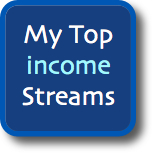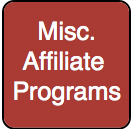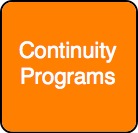
.
Automated income
With the exception of #6, all of these income sources are fully automated. I don’t have to do anything to maintain them except deposit checks, and in most cases I don’t even have to do that because the money is automatically deposited to my bank account.
-->
I love automated income. With this blog I currently have no sales, no employees, no products, no inventory, no credit card processing, no fraud, and no customers. And yet I’m still able to generate a reasonable (and growing) income.
Why get a regular job and trade your time for money when you can let technology do all that work for you? Imagine how it would feel to wake up each morning, go to your computer, and check how much money you made while you were sleeping. It’s a really nice situation to be in.
Blogging software and hardware
I use WordPress for this blog, and I highly recommend it. Wordpress has lots of features and a solid interface. And you can’t beat its price — free.
The rest of this site is custom-coded HTML, CSS, PHP, and MySQL. I’m a programmer, so I coded it all myself. I could have just as easily used an existing template, but I wanted a simple straightforward design for this site, and I wanted the look of the blog to match the rest of the site. Plus I use PHP and MySQL to do some creative things outside the blog, like the Million Dollar Experiment.
I don’t recommend using a hosted service like Blogger if you want to seriously monetize your blog. You don’t get enough control. If you don’t have your own URL, you’re tying yourself to a service you don’t own and building up someone else’s asset. You want to build page rank and links for your own URL, not someone else’s. Plus you want sufficient control over the layout and design of your site, so you can jump on any opportunities that require low-level changes. If you use a hosted blog, you’re at the mercy of the hosting service, and that puts the future of any income streams you create with them at risk. It’s a bit more work up front to self-host, but it’s less risky in the long run.
Web hosting is cheap, and there are plenty of good hosts to choose from. I recommend Pair.com for a starter hosting account. They aren’t the cheapest, but they’re very reliable and have decent support. I know many online businesses that host with them, and my wife refers most of her clients there.
As your traffic grows you may need to upgrade to a dedicated server or a virtual private server (VPS). This web site is hosted by ServInt. I’ve hosted this site with them since day one, and they’ve been a truly awesome host. What I like most about them is that they have a smooth upgrade path as my traffic keeps growing. I’ve gone through several upgrades with them already, and all have been seamless. The nice thing about having your own server is that you can put as many sites on it as the server can handle. I have several sites running on my server, and it doesn’t cost me any additional hosting fees to add another site.
Comments or no comments
When I began this blog, I started out with comments enabled. As traffic grew, so did the level of commenting. Some days there were more than 100 comments. I noticed I was spending more and more time managing comments, and I began to question whether it was worth the effort. It became clear that with continued traffic growth, I was going to have to change my approach or die in comment hell. The personal development topics I write about can easily generate lots of questions and discussion. Just imagine how many follow-up questions an article like this could generate. With tens of thousands of readers, it would be insane. Also, nuking comment spam was chewing up more and more of my time as well.
But after looking through my stats, I soon realized that only a tiny fraction of visitors ever look at comments at all, and an even smaller fraction ever post a comment (well below 1% of total visitors). That made my decision a lot easier, and in October 2005, I turned blog comments off. In retrospect that was one of my best decisions. I wish I had done it sooner.
If you’d like to read the full details of how I came to this decision, I’ve written about it previously: Blog Comments and More on Blog Comments.
Do you need comments to build traffic? Obviously not. Just like when I put up ads, I saw no decline in traffic when I turned off comments. In fact, I think it actually helped me. Although I turned off comments, I kept trackbacks enabled, so I started getting more trackbacks. If people wanted to publicly comment on something I’d written, they had to do so on their own blogs and post a link. So turning off comments didn’t kill the discussion — it just took it off site. The volume of trackbacks is far more reasonable, and I can easily keep up with it. I even pop onto other people’s sites and post comments now and then, but I don’t feel obligated to participate because the discussion isn’t on my own site.
I realize people have very strong feelings about blog comments and community building. Many people hold the opinion that a blog without comments just isn’t a blog. Personally I think that’s utter nonsense — the data just doesn’t support it. The vast majority of blog readers neither read nor post comments. Only a very tiny and very vocal group even care about comments. Some bloggers say that having comments helps build traffic, but I saw no evidence of that. In fact, I think it’s just the opposite. Managing comments detracts from writing new posts, and it’s far better to get a trackback and a link from someone else’s blog vs. a comment on your own blog. As long-term readers of my blog know, when faced with ambiguity, my preference is to try both alternatives and compare real results with real results. After doing that my conclusion is this: No comment. 
Now if you want to support comments for non-traffic-building reasons like socializing or making new contacts, I say go for it. Just don’t assume that comments are necessary or even helpful in building traffic unless you directly test this assumption yourself.
Build a complete web site, not just a blog
Don’t limit your web site to just a blog. Feel free to build it out. Although most of my traffic goes straight to this blog, there’s a whole site built around it. For example, the home page of this site presents an overview of all the sections of the site, including the blog, article section, audio content, etc. A lot of people still don’t know what a blog is, so if your whole site is your blog, those people may be a little confused.
Testing and optimization
In the beginning you won’t know which potential streams of income will work best for you. So try everything that’s reasonable for you. If you learn about a new potential income stream, test it for a month or two, and measure the results for yourself. Feel free to cut streams that just aren’t working for you, and put more effort into optimizing those streams that show real promise.
A few months ago, I signed up for an account with Text Link Ads. It took about 20 minutes. They sell small text ads on my site, split the revenue with me 50-50, and deposit my earnings directly into my PayPal account. This month I’ll make around $600 from them, possibly more if they sell some new ads during the month. And it’s totally passive. If I never tried this, I’d miss out on this easy extra income.
For many months I’ve been tweaking the Adsense ads on this site. I tried different colors, sizes, layouts, etc. I continue to experiment now and then, but I have a hard time beating the current layout. It works very well for me. Adsense doesn’t allow publishers to reveal specific CPM and CTR data, but mine are definitely above par. They started out in the gutter though. You can easily double or triple your Adsense revenue by converting a poor layout into a better one. This is the main reason why during my first year of income, my traffic grew at 20% per month, but my income grew at 50% per month. Frequent testing and optimization had a major positive impact. Many of my tests failed, and some even made my income go down, but I’m glad I did all that testing. If I didn’t then my Adsense income would only be a fraction of what it is now.
It’s cheap to experiment. Every new advertising or affiliate service I’ve tried so far has been free to sign up. Often I can add a new income stream in less than an hour and then wait a month to see how it does. If it flops then at least I learned something. If it does well, wonderful. As a blogger who wants to generate income, you should always be experimenting with new income streams. If you haven’t tried anything new in six months, you’re almost certainly missing some golden opportunities. Every blog is different, so you need to test things for yourself to see what works for you. Failure is impossible here — you either succeed, or you learn something.
Pick your niche, but make sure it isn’t too small
Pick a niche for your blog where you have some significant expertise, but make sure it’s a big enough niche that you can build significant traffic. My wife runs a popular vegan web site. She does pretty well within her niche, but it’s just not a very big niche. On the other hand, my topic of personal development has much broader appeal. Potentially anyone can be interested in improving themselves, and I have the flexibility to write about topics like productivity, self-discipline, relationships, spirituality, health, and more. It’s all relevant to personal development.
Pick a niche that you’re passionate about. I’ve written 400+ articles so far, and I still feel like I’m just getting started. I’m not feeling burnt out at all. I chose to build a personal development site because I’m very knowledgeable, experienced, and passionate about this subject. I couldn’t imagine a better topic for me to write about.
Don’t pick a niche just because you think it will make you money. I see many bloggers try to do that, and it’s almost invariably a recipe for failure. Think about what you love most, and then find a way to make your topic appealing to a massive global audience. Consider what will provide genuine value to your visitors. It’s all about what you can give.
A broad enough topic creates more potential advertising partners. If I keep writing on the same subtopic over and over, I may exhaust the supply of advertisers and hit an income ceiling. But by writing on many different topics under the same umbrella, I widen the field of potential advertisers. And I expand the appeal of my site at the same time.
Make it clear to your visitors what your blog/site is about. Often I visit a blog with a clever title and tagline that reveals nothing about the site’s contents. In that case I generally assume it’s just a personal journal and move on. I love to be clever too, but I’ve found that clarity yields better results than cleverness.
Posting frequency and length
Bloggers have different opinions about the right posting length and frequency. Some bloggers say it’s best to write short (250-750 word) entries and post 20x per week or more. I’ve seen that strategy work for some, but I decided to do pretty much the opposite. I usually aim for about 3-5 posts per week, but my posts are much longer (typically 1000-2000 words, sometimes longer than 5000 words, including the monster you’re reading right now). That’s because rather than throwing out lots of short tips, I prefer to write more exhaustive, in-depth articles. I find that deeper articles are better at generating links and referrals and building traffic. It’s true that fewer people will take the time to read them, but those that do will enjoy some serious take-away value. I don’t believe in creating disposable content just to increase page views and ad impressions. If I’m not truly helping my visitors, I’m wasting their time.
Expenses
Blogging is dirt cheap.
I don’t spend money on advertising or promotion, so my marketing expenses are nil. Essentially my content is my marketing. If you like this article, you’ll probably find many more gems in the archives.
My only real expenses for this site are the hosting (I currently pay $149/month for the web server and bandwidth) and the domain name renewal ($9/year). Nearly all of the income this site generates is profit. This trickles down to my personal income, so of course it’s subject to income tax. But the actual business expenses are minimal.
The reason I pay so much for hosting is simply due to my traffic. If my traffic were much lower, I could run this site on a cheap shared hosting account. A database-driven blog can be a real resource hog at high traffic levels. The same goes for online forums. As traffic continues to increase, my hosting bill will go up too, but it will still be a tiny fraction of total income.
Perks
Depending on the nature of your blog, you may be able to enjoy some nice perks as your traffic grows. Almost every week I get free personal development books in the mail (for potential review on this site). Sometimes the author will send it directly; other times the publisher will ship me a batch of books. I also receive CDs, DVDs, and other personal development products. It’s hard to keep up sometimes (I have a queue of about two dozen books right now), but I am a voracious consumer of such products, so I do plow through them as fast as I can. When something strikes me as worthy of mention, I do indeed write up a review to share it with my visitors. I have very high standards though, so I review less than 10% of what I receive. I’ve read over 700 books in this field and listened to dozens of audio programs, so I’m pretty good at filtering out the fluff. As I’m sure you can imagine, there’s a great deal of self-help fluff out there.
My criteria for reviewing a product on this site is that it has to be original, compelling, and profound. If it doesn’t meet these criteria, I don’t review it, even if there’s a generous affiliate program. I’m not going to risk abusing my relationship with my visitors just to make a quick buck. Making money is not my main motivation for running this site. My main motivation is to grow and to help others grow, so that always comes first.
Your blog can also gain you access to certain events. A high-traffic blog becomes a potential media outlet, so you can actually think of yourself as a member of the press, which indeed you are. In a few days, my wife and I will be attending a three-day seminar via a free press pass. The regular price for these tickets is $500 per person. I’ll be posting a full review of the seminar next week. I’ve been to this particular seminar in 2004, so I already have high expectations for it. Dr. Wayne Dyer will be the keynote speaker.
I’m also using the popularity of this blog to set up interviews with people I’ve always wanted to learn more about. This is beautifully win-win because it creates value for me, my audience, and the person being interviewed. Recently I posted an exclusive interview with multi-millionaire Marc Allen as well as a review of his latest book, and I’m lining up other interviews as well. It isn’t hard to convince someone to do an interview in exchange for so much free exposure.
Motivation
I don’t think you’ll get very far if money is your #1 motivation for blogging. You have to be driven by something much deeper. Money is just frosting. It’s the cake underneath that matters. My cake is that I absolutely love personal development – not the phony “fast and easy” junk you see on infomercials, but real growth that makes us better human beings. That’s my passion. Pouring money on top of it just adds more fuel to the fire, but the fire is still there with or without the money.
What’s your passion? What would you blog about if you were already set for life?
Blogging lifestyle
Perhaps the best part of generating income from blogging is the freedom it brings. I work from home and set my own hours. I write whenever I’m inspired to write (which for me is quite often). Plus I get to spend my time doing what I love most — working on personal growth and helping others do the same. There’s nothing I’d rather do than this.
Perhaps it’s true that 99 out of 100 people can’t make a decent living from blogging yet. But maybe you’re among the 1 in 100 who can.
On the other hand, I can offer you a good alternative to recommend if you don’t have the technical skills to build a high-traffic, income-generating blog. Check out Build Your Own Successful Online Business for details.
Make Money Blogging
Do you want to make money blogging? If you do – you’re not alone. More and more bloggers are finding that blogging is a profitable medium. Whether it be to earn a few extra dollars a week to feed their coffee habit, or making enough money to stop them having to get a part time job to get through college, or whether they’ve got it to a point where they are able to make a full time living from their blogging – there are tens of thousands of bloggers who make money blogging.
How to Make Money Blogging
In this page I want to share some information for beginners on how to make money blogging. For a very quick and broad visual intro – check out this Make Money Blogging MindMap which visualizes just SOME of the ways bloggers make money blogging.
First – let me start by sharing my own top Money Making Methods (updated regularly) but below that point you to some great resources and teaching on how to increase your income from blogging.
 What follows is a quick summary of my main income streams from blogging. Before you read it though – keep in mind that every blog is unique in how it can make money. Some of the following income streams will work on some blogs a lot better than others – the key is to experiment with as many as possible and see what works best for you.
What follows is a quick summary of my main income streams from blogging. Before you read it though – keep in mind that every blog is unique in how it can make money. Some of the following income streams will work on some blogs a lot better than others – the key is to experiment with as many as possible and see what works best for you.
The following income streams (from a number of blogs) have helped me to earn a six figure income each year for the last 5 years from blogging. I’ve ranked them from highest to lowest.
I hope you find it useful to see the mix and variety of ways that I earn a living from blogging.
1. AdSense
 Despite not using it here at ProBlogger any more (here’s why) I continue to use AdSense with amazing effect on my other blogs. I have them all set to show image and text based ads and find that 250×300 pixel ads work best (usually with a blended design). I don’t have much luck with their ‘referrals’ program but their normal ads work a treat and continue to be the biggest earner for me.
Despite not using it here at ProBlogger any more (here’s why) I continue to use AdSense with amazing effect on my other blogs. I have them all set to show image and text based ads and find that 250×300 pixel ads work best (usually with a blended design). I don’t have much luck with their ‘referrals’ program but their normal ads work a treat and continue to be the biggest earner for me.2. Affiliate Programs
 I run a variety of affiliate programs on my blogs – most of which bring in smaller amounts of money that don’t really justify a category of their own (but which certainly add up).
I run a variety of affiliate programs on my blogs – most of which bring in smaller amounts of money that don’t really justify a category of their own (but which certainly add up).
These include recommending quality products like these here on ProBlogger: Thesis WordPress theme, Yaro’s Blog Mastermind Coaching Program and How to Launch the F*** out of your E-Book (and others) as well as some great products on my photography blog including 123 of Digital Imaging, David DuChemin’s amazing Photography E-Books and Mitchell Kanashkevich’s great ebooks.
The great thing about many of these programs is that they are of such high quality that they sell themselves and I am being emailed from readers who sign up to them thanking me for the recommendation!
3. E-Book Sales
 Last time I did a wrap up of how I make money blogging this category did not exist for me – I didn’t really have any of my own products to sell at all. However in the last year or so I’ve released 3 E-books – 31 Days to Build a Better Blog,The Essential Guide to Portrait Photography and Photo Nuts and Bolts: Know Your Camera and Take Better Photos. While these products all only sell for under $20 they certainly add up and some months this has been my biggest category of income. The reason they were only ranking at #3 in the last month was that I didn’t do a product launch (I wrote about one launch which brought in $72,000 in a week here). This is an income stream I see growing as I add more E-books to my range (expect 3 in the coming few months).
Last time I did a wrap up of how I make money blogging this category did not exist for me – I didn’t really have any of my own products to sell at all. However in the last year or so I’ve released 3 E-books – 31 Days to Build a Better Blog,The Essential Guide to Portrait Photography and Photo Nuts and Bolts: Know Your Camera and Take Better Photos. While these products all only sell for under $20 they certainly add up and some months this has been my biggest category of income. The reason they were only ranking at #3 in the last month was that I didn’t do a product launch (I wrote about one launch which brought in $72,000 in a week here). This is an income stream I see growing as I add more E-books to my range (expect 3 in the coming few months).4. Continuity Programs
 This is another newer category for me but one that continues to grow.
This is another newer category for me but one that continues to grow.
A continuity program is a site where you earn a recurring income from people who subscribe to a service you offer.
For me this includes two sites – ProBlogger.com and Third Tribe Marketing. Both programs are membership sites and generate monthly income from the thousands of members that they have as a part of them.
5. Private Ad Sales/Sponsorships
 Private ad sales directly to advertisers have fallen for me in the last year (they previously ranked #3 on this list). This is partly due to a change in my own focus but also partly due to the economy as it is. I should note that this area does vary a little from month to month depending upon the campaigns we’re asked to run – we’ve had a couple of months where it actually ranked #2 in the last year.
Private ad sales directly to advertisers have fallen for me in the last year (they previously ranked #3 on this list). This is partly due to a change in my own focus but also partly due to the economy as it is. I should note that this area does vary a little from month to month depending upon the campaigns we’re asked to run – we’ve had a couple of months where it actually ranked #2 in the last year.
This includes ad sales of the 125 x 125 ads here at ProBlogger as well as a campaign or two atDigital Photography School.
6. Chitika
 Chitka continues to be a great performer for me on my blogs. They traditionally have worked best on product related blogs although theirPremium ad units now convert well on a larger range of blogs.
Chitka continues to be a great performer for me on my blogs. They traditionally have worked best on product related blogs although theirPremium ad units now convert well on a larger range of blogs.
While I’ve focused a little less on Chitika in the last 6 months (mainly as I’ve released my own products and moved a little away from advertising) they do continue to perform well where I use them and over the time I’ve been using Chitika they’ve now earned me over a quarter of a million dollars – as a result I can’t recommend them enough!
7. Amazon Associates
Amazon’s affiliate program has been one of my big movers in the last 12 months. I used to make a few odd dollars from it – however in recent times it has become a significant earner for me (in fact it’s now earned me over $100,000 since I started using it). Christmas time (and the lead up to it) is a particularly good time for Amazon – last December it would have ranked #2 on this list.
8. ProBlogger Job Boards
 The job boards here at ProBlogger continue to grow each month in the number of advertisements that are being bought. This enabled me to invest most of the money that they’d earned a while back into getting a new back end for the boards and to redesign them. These job boards now bring in over $1000 a month in revenue which is pretty nice considering that they are so low maintenance to run. They also offer a service to readers and add value to the overall blog.
The job boards here at ProBlogger continue to grow each month in the number of advertisements that are being bought. This enabled me to invest most of the money that they’d earned a while back into getting a new back end for the boards and to redesign them. These job boards now bring in over $1000 a month in revenue which is pretty nice considering that they are so low maintenance to run. They also offer a service to readers and add value to the overall blog.
The only problem that I face with the job boards is that there are so many bloggers looking for work that the demand for jobs far exceeds the supply. On the good side of things is that advertisers are reporting getting amazing quality of applications.
9. Speaking Fees
I get asked to do a lot of speaking and increasingly they are paid opportunities. I’m not able to do as many as I would like (mainly because I live in Australia and most of what I’m asked to do is overseas and I only travel 2-3 times a year) – however in April I did a couple of events and the income was enough to include in this list.
Other Income
In addition to all of the above there are many smaller incomes. Many of these are from smaller advertising programs that I test but none are big enough to really rate a mention here.
The other income stream that there was no actual money from in April was book royalties from theProBlogger Book. These are only paid every 6 or so months (not in April). It’s probably also worth mentioning that authors don’t tend to make a whole lot of money on book royalties – you don’t write books to get rich (unless you sell a lot of them).
Useful Resources for Bloggers Wanting to Make Money Blogging
A lot has been written on the topic of making money online from blogs. There is a lot of wonderful information out there – but also a lot of hype and sometimes dangerous information.


No comments:
Post a Comment